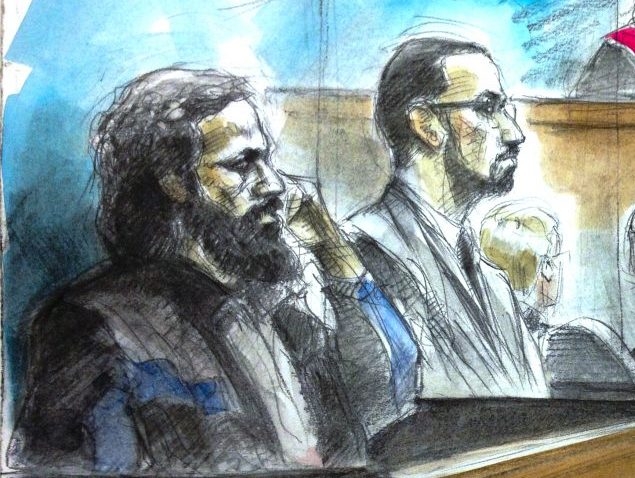They were convicted in March, and today, would-be terrorists Raed Jaser and Chiheb Esseghaier learned their fate in a Toronto court room.
In March the pair were found guilty of conspiring to commit murder for the benefit of, at the direction of or in association with, a terrorist group.
Esseghaier was found guilty of all charges, while Jaser was convicted of all but one charge.
Today, CBC.ca reports, both were sentenced to life in prison, which was what the Crown had asked for.
The most important evidence in the case was 25 hours of secretly recorded conversations between the two men and an undercover FBI agent. The agent posed as a wealthy Egyptian-American real estate developer whose views had supposedly become more hard line in recent years and who was a willing accomplice in the conspiracy.
The court heard conversations in which Jaser and Esseghaier discussed their ideologies, the plot to derail a Via Rail train travelling between New York and Toronto and other ideas for potential attacks.
Jurors were also shown aerial surveillance of the two accused and the undercover officer scouting a railway bridge in September 2012 in broad daylight as several trains passed by only metres away.
BREAKING: Life in prison for VIA Rail terror plotters - The Rebel
that's a shame.
In March the pair were found guilty of conspiring to commit murder for the benefit of, at the direction of or in association with, a terrorist group.
Esseghaier was found guilty of all charges, while Jaser was convicted of all but one charge.
Today, CBC.ca reports, both were sentenced to life in prison, which was what the Crown had asked for.
The most important evidence in the case was 25 hours of secretly recorded conversations between the two men and an undercover FBI agent. The agent posed as a wealthy Egyptian-American real estate developer whose views had supposedly become more hard line in recent years and who was a willing accomplice in the conspiracy.
The court heard conversations in which Jaser and Esseghaier discussed their ideologies, the plot to derail a Via Rail train travelling between New York and Toronto and other ideas for potential attacks.
Jurors were also shown aerial surveillance of the two accused and the undercover officer scouting a railway bridge in September 2012 in broad daylight as several trains passed by only metres away.
BREAKING: Life in prison for VIA Rail terror plotters - The Rebel
that's a shame.
